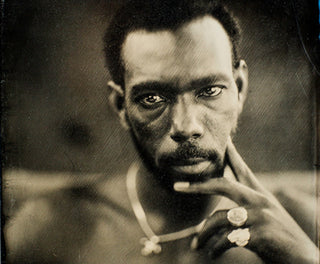Matt Alberts, feeling frustrated with the state of photography and with a desire to create something with his hands, came across the wet collodion process. A process invented in the 1850s in which a glass or metal plate is immersed in a solution of silver nitrate in a darkroom, then while still wet, exposed in a camera (hence wet plate), and developed by pouring a solution of pyrogallic acid over it and fixed with a solution of potassium cyanide. Alberts has embraced the process and headed out on the road from his native Denver, armed with his 11 x 14 Chamonix View Camera to create wet plates of individuals who have dedicated their lives to skateboarding. He calls the these individuals Lifers and this mission The Lifers Project. In our interview below, we discuss skating, digital vs. film, permanence, and the drive down Route 66 meeting Lifers of all shapes and sizes, which he says “really clarified, for me, what I already knew existed, which is a brotherhood of skateboarding that exists everywhere.”
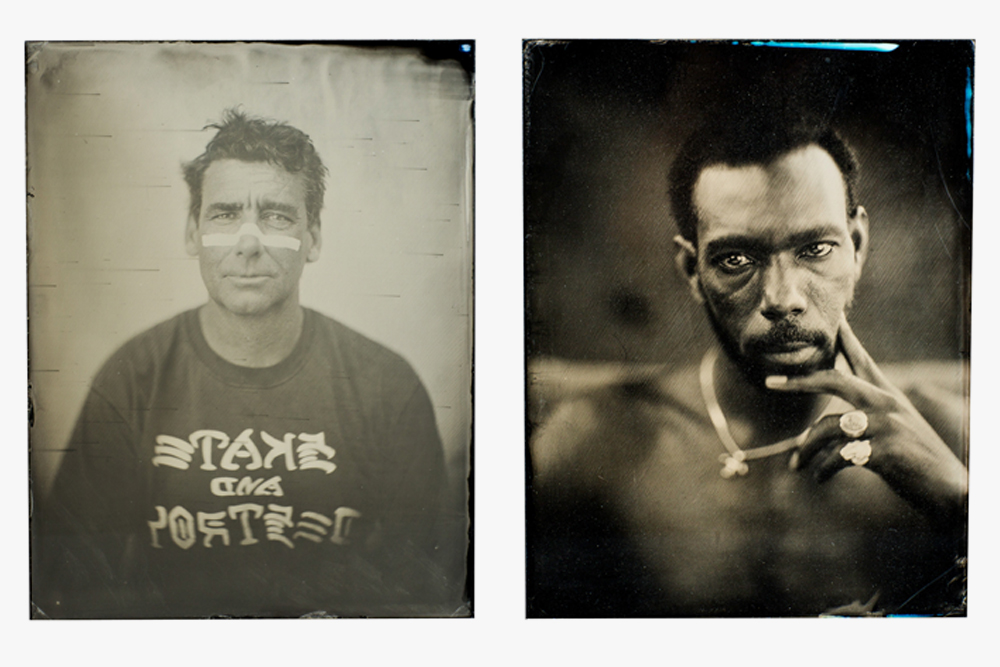
Left: Lance Mountain, Right: Walter Lacey
How long have you been photographing? School or self-taught?
I’ve been making photographs since I was about 11. I started with my stepmother… it was honestly right around the same time I started skateboarding, which is kind of how everything came together for the project. Then I shot film and black and white in high school and was self-taught basically.
How did you discover the collodion/wet-plate process? What was the learning curve like?
My fourth great-grandfather was a wet collodion photographer in Binghamton, New York. So my whole life I’ve had tintypes of his – of my family. I’ve always been sort of intrigued by how they were made, but I had never seen the process done. Once I saw how hands on it was from Quinn Jacobson, a good friend of mine – the mixing and the chemistry – almost how challenging it becomes made it more fun. That’s what excited me most about it and got me into it.
As far as the learning curve, I was blessed in the fact that I had somebody who basically took me under his wing and showed me how it was done. There was a lot of dangerous potential involved, so I feel like I learned pretty quickly because I was really hands on with Quinn in his studio working out of Denver.
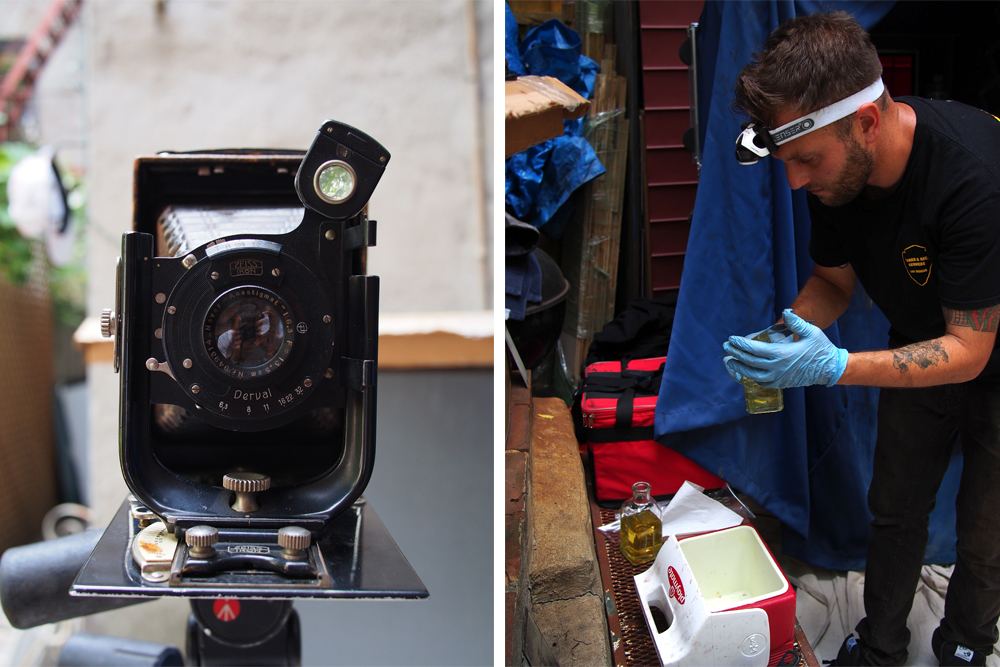
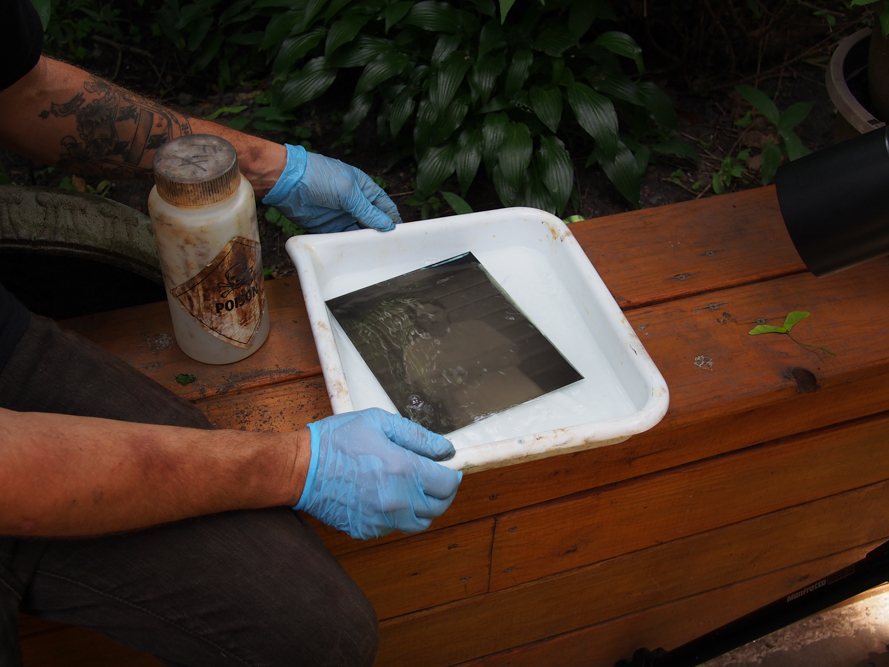
Given the state of photography and how more and more people are themselves photographers, especially on Instagram, was this a way of separating yourself? I know for me I go back to using film.
Given the state of photography, I have mixed emotions about everything. A good friend of mine – Zeb out of Philly – never really even took pictures before digital and he got himself a cell phone. Blew my mind! I think he discovered himself that he was actually a really talented photographer. I mean, he’s always been sort of an artist – we skated and whatnot forever as well, but digital almost brought out his talent because he didn’t really care to know about the specifics and the film or have the money to buy a camera or whatever it was, but his composition in his photographs are insane just with an iPhone.
For me, it was definitely like that, where I was shooting a lot of repetitive digital photography just to make money. And for the most part, I’ve kind of come full circle with collodion where I got into it because I was craving [something] more hands on and I wasn’t getting that from shooting a digital photo and then sitting in front of my screen for three days editing. It was just crushing my creativity.
[Collodion], I feel like, just sparked a creativity that I hadn’t felt in a while – literally since I got into [photography]. The anticipation of developing film… I’m kind of split between the two right now, but for me I’d say it’s definitely been an outlet to get back into what feels creative and good to me to be doing.
Tell us more about the Lifers project.
The original idea for the Lifers Project basically started back when I was interning with Quinn. I was in his studio. I was just doing it and Quinn’s always been really big on having purpose behind your photography… having a real artistic purpose behind the work that you’re doing.
What the project has been to me the whole time is showing people for who they really are using this process. Based on the fact that it has the ability to see under your skin. I’ve been a skateboarder since I can remember, and just growing up, you’re almost categorized as a criminal or an outcast of some sorts just because you skateboard, which is totally not the case – that’s a fucking stupid stereotype that someone came up with somewhere I guess. But that’s it in a nutshell. It’s become about documenting people who have dedicated their lives to skateboarding in whatever way. Once they started skating, there was no giving it up. You’re gonna skate until your leg falls off. That’s pretty much the most common question; [for people that start] skateboarding, from there on out it’s gonna be a part of their life until they die. They’re going to try to skate regardless of injuries or accidents or anything crazy that happens. Just gonna go back to skateboarding no matter what it takes.
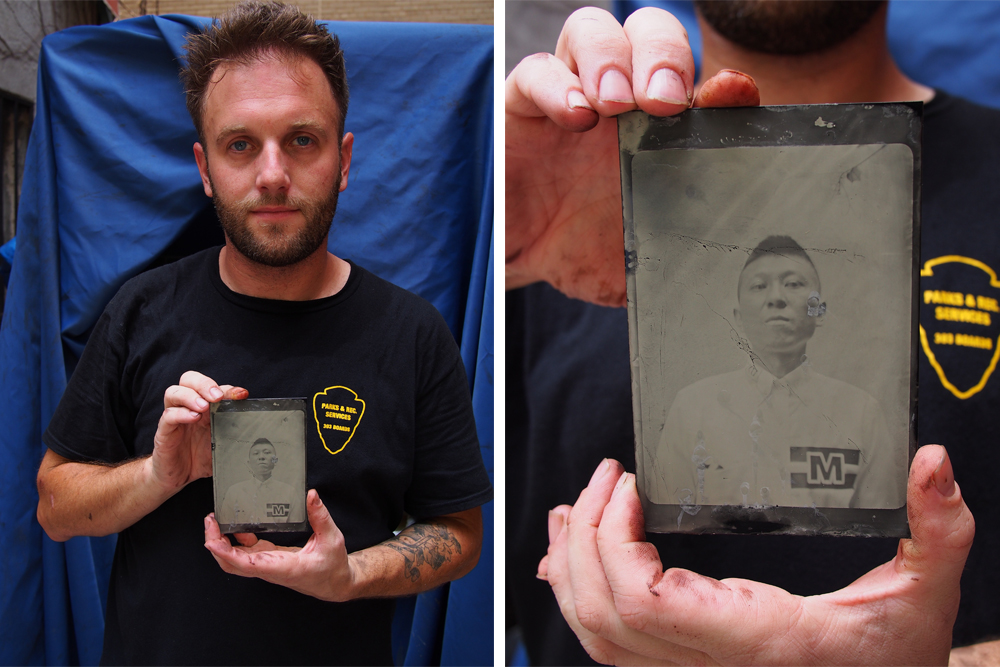
I definitely get a sense of harmony from the tin plate – well the medium, metal or glass – it’s done on glass as well right?
Yeah, you can do it on glass, aluminum, plexiglass, anything that you can get super clean for the most part.
There’s such a permanence, which adds to the whole Lifers statement –
As much as I love skateboarding, I love photography that much too.
You traveled the West Coast photographing people dedicated to skateboarding for the project, what was that like?
So the moment where it really clicked for me was, Chet came by the studio – I knew I wanted to photograph him just because he’s such an awesome looking person, just rad, he just oozes radness in everything he does. So I wanted to make his picture and he came over, he checked it out, he was hyped on it. Just his energy, there’s nobody that’s more of a Lifer than that dude, that dude will skate in the fucking snow, rain, he doesn’t give a shit. He’s out there in the streets, shoveling the bowl; shoveling someone’s pool out, and so he really brought it all together for me.
Then after talking to him he was like, “Yo, we should take this on the road and we should go down Route 66, there’s all sorts of cool shit to take photos of. I got friends on the way, and there’s empty swimming pools,” and then I was like alright, that’s it. Once I set my mind on something, I’m pretty determined. And here we are now, like a month and a half into the second leg and it feels good. I think we’re doing something that people like.
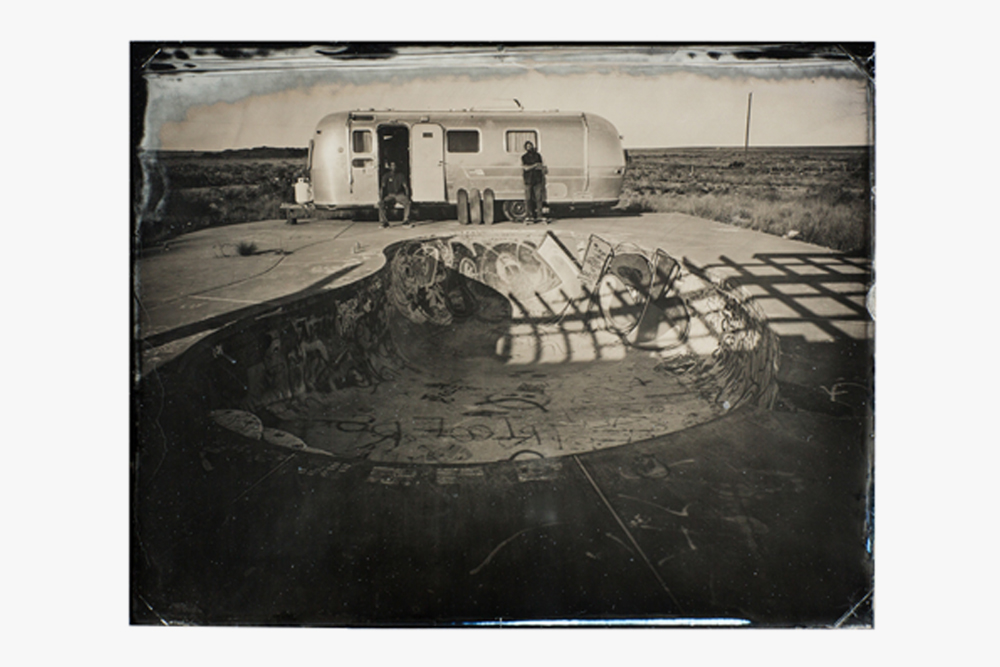
Any notable story about one of your subjects?
The first leg of the project had Route 66 to California and it was more than I ever could have imagined. It really clarified, for me, what I already knew existed which is a brotherhood of skateboarding that exists everywhere. From the beginning, everywhere we go, people have been hyped on it. They’re like, “Come on in, you need to shoot this dude.” It’s never been about the pros. I mean we have had some awesome big name people involved as well, but we’ve had a lot of small people: our friend Palmer in New Mexico. This guy bought a fucking house because of the swimming pool in the backyard. People like that. There’s Lifers of all different shapes and sizes, it’s not just one branch of people by any means.
The trip was awesome – we were welcomed by all sorts of people. The moment that stands out: I honestly made a little bit of a mistake. I have this 18th century headpiece that keeps your head still – it’s like a $800 piece of iron, it’s ridiculous. We left that at Baker and then we drove to Lance Mountain’s house to make a plate of Lance. [When] we got to Lance’s, we realized the head brace was back at Baker, so we shot at Lance’s all day and got the word that Nuge (Don Nguyen) was actually gonna be swinging by in the afternoon. He was down to check out the process and be a part of it. It actually wound up being a blessing that we left the head brace in the first place ‘cause we got back there, Nuge was there and he was hyped on it, and we were starting to lose the light.
So we got everything set up and made one plate… that was the first one we made and then after that the light immediately fell off and we couldn’t make any more plates. That’s pretty much the only one we made that day and it’s my favorite from the entire trip.
Any advice for someone out there curious about photography or collodion process?
I’d say first of all, make sure that you really want to do it. Watch some videos, make sure it’s something you’re committed to doing. There is a learning curve – it’s not easy by any means. Quinn Jacobson has been the most instrumental to me and studioq.com is his website. He has all sorts of videos and resources on it all the way from ordering chemistry to troubleshooting and what not. All sorts of good stuff. I have his book with me every time I shoot and would totally be lost without it. So that’s probably the most essential part next to knowing that it’s something that you’re gonna wanna do and that it’s gonna be expensive to, in my opinion, make something that’s worthwhile. Something that’s meaningful.
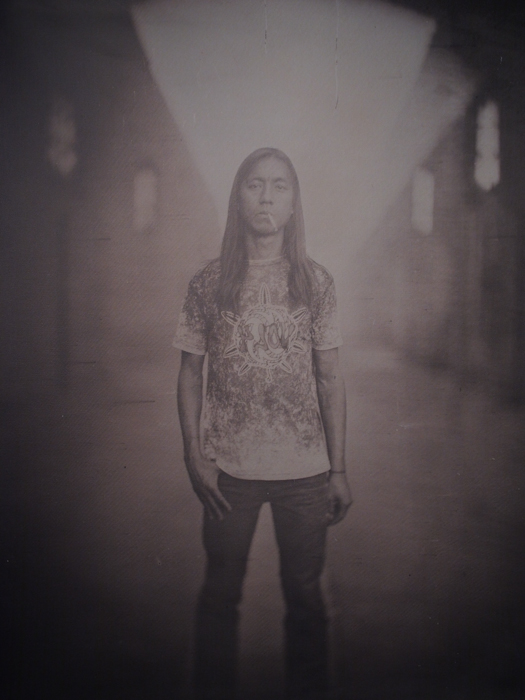
Can you expand on your artist statement? Why do you think you equate “being more involved” with working literally with your hands?
Sitting in front of my computer doesn’t feel like I’m doing anything. But by the time I get done making wet plates, I’m fucking exhausted. Most of the time we’ve been on the road we’ve been working 10/12-hour days. It’s the entire back of my truck to make these on the road, mobile dark room, all the chemistry, the plates themselves, you’ve got to have everything there so it’s a workout. It’s kind of faded now but I get actual silver on me, it. At the end of the day it feels like you made something. And when I get done editing whatever on my computer it doesn’t really feel like I made shit when I put it on my hard drive and stack it away in my safe. It’s just a file… it’s hard to compare what’s real and tangible and what you’re holding in your hand versus something that doesn’t even exist. It’s just a zero or a one in reality. I mean, you can print it and then it does, but it still doesn’t feel the same.
I always equate digital photography to something I can throw away or give away where as my film stuff, I kinda – it’s tangible.
I’ve been a hoarder… I would never give away a negative and it’s becoming a bit of problem for me with this project in particular because I’m attached to a lot of plates so I have a lot of plates.
There’s no negative right?
No, it’s a direct positive.
So once that photo is done; that’s it. That’s the only copy of that photo unless you shoot it but that’s it.
I don’t want to really sell them… they’re more value to me than our every day skateboarder friend could afford. So what I did is I made photographs, basically, of the plates and then have made an original series of numbered prints that are available at thelifersproject.tumblr.com and they’ll be available on the 11th over at Culture Fix. And that’s going to be the last showing of the route 66 collection; stay tuned for some updates of the New York showing.
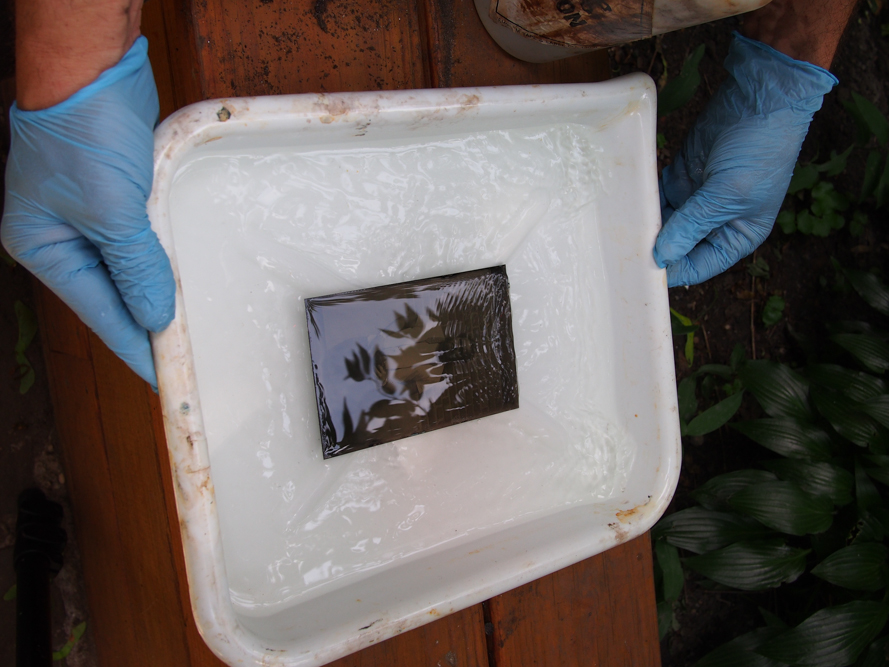
::
::
Final Show at Superchief Gallery photos:
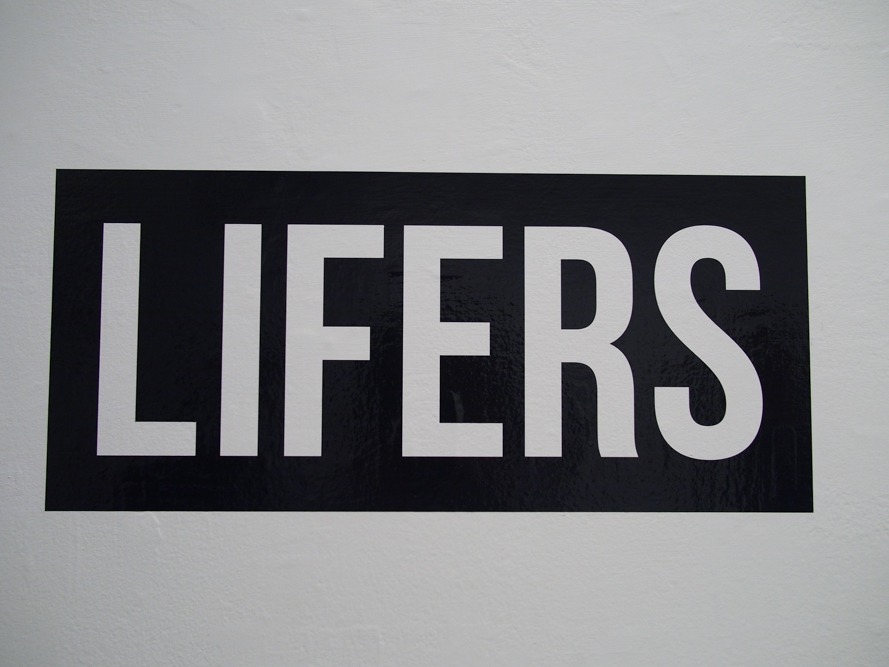

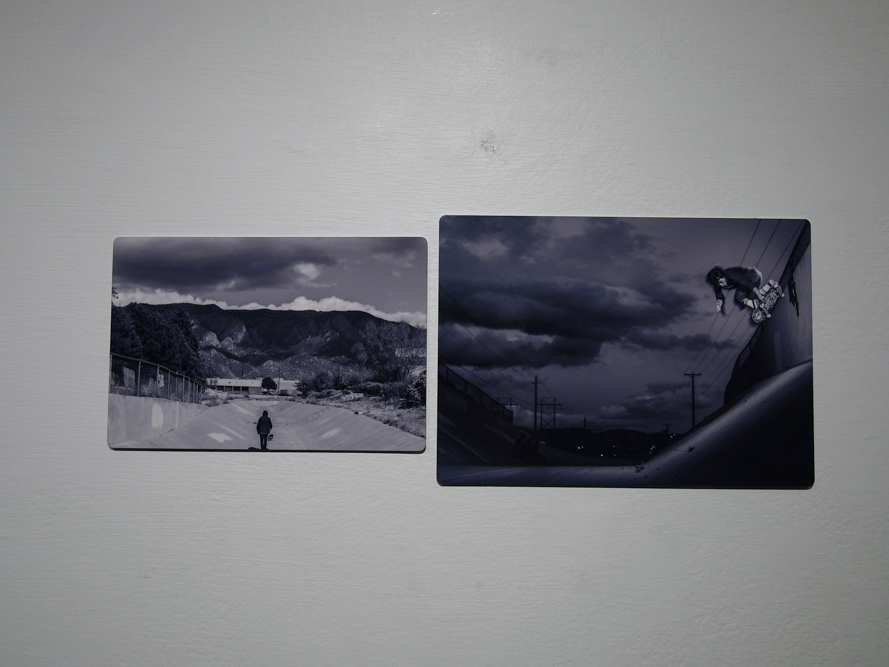
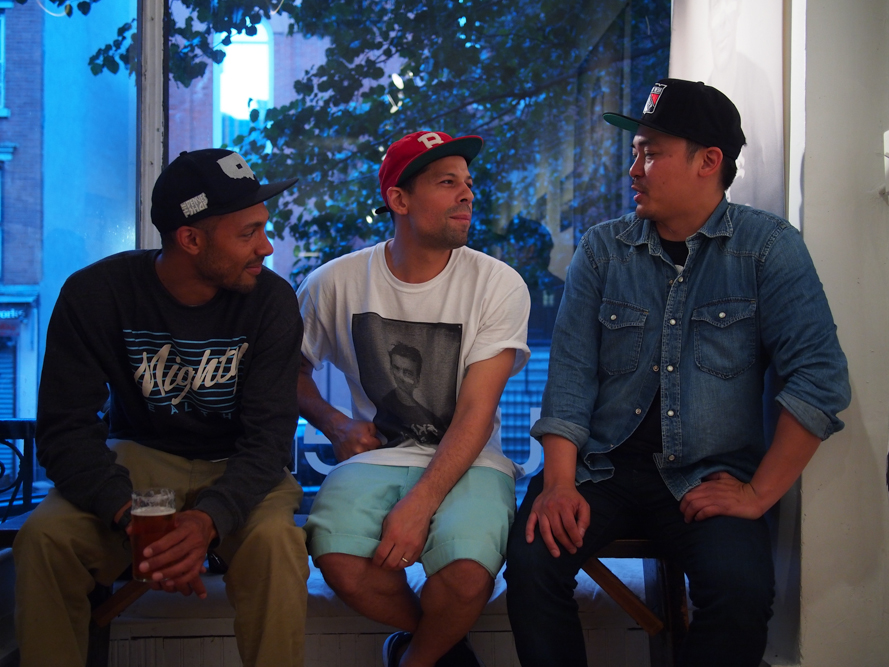
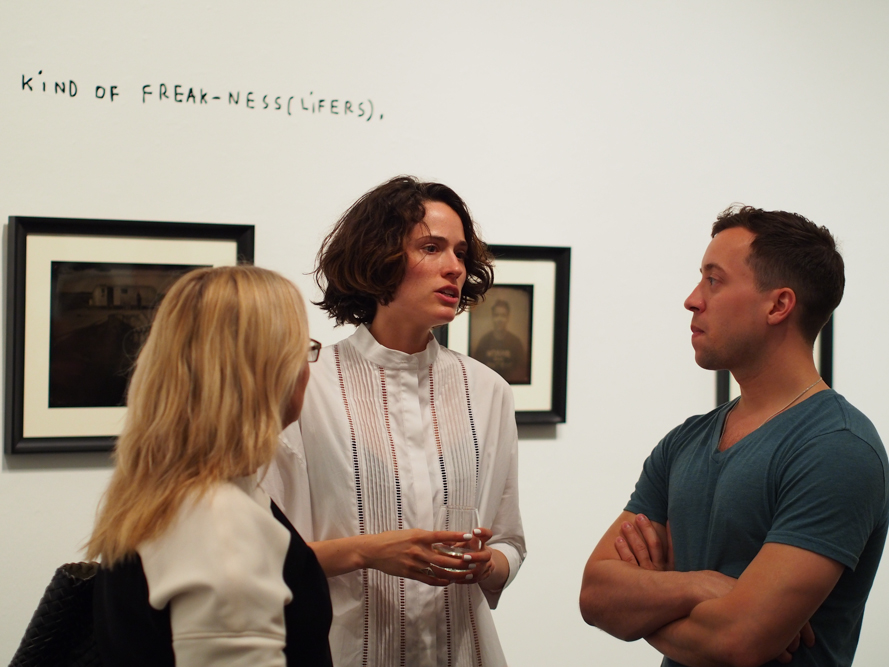
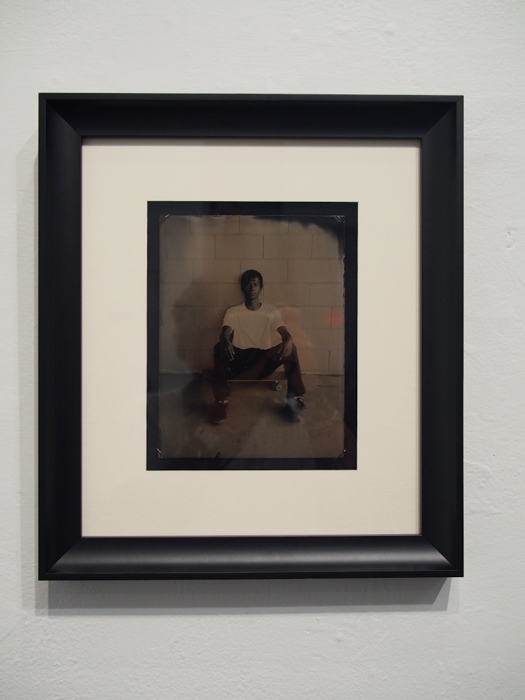
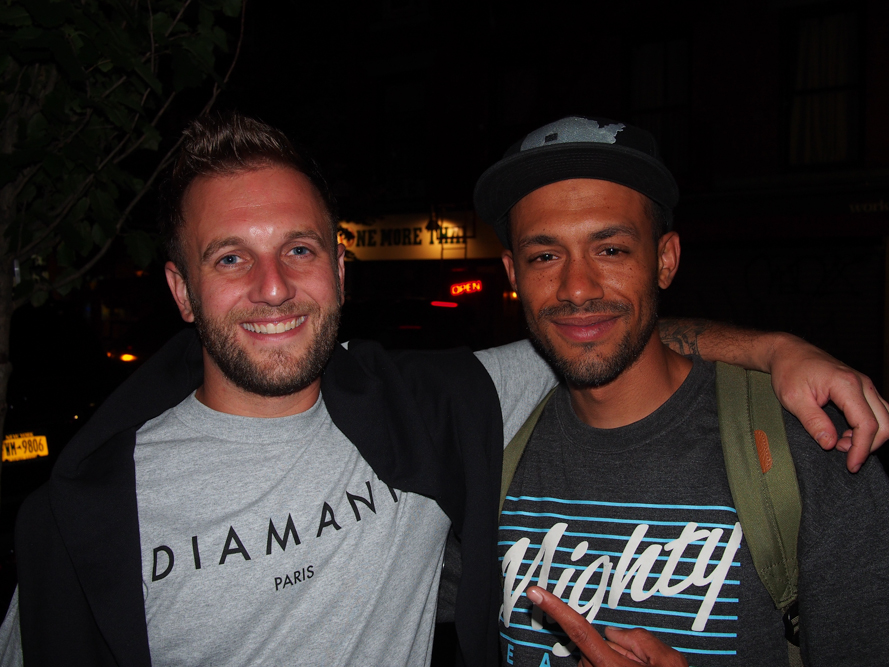
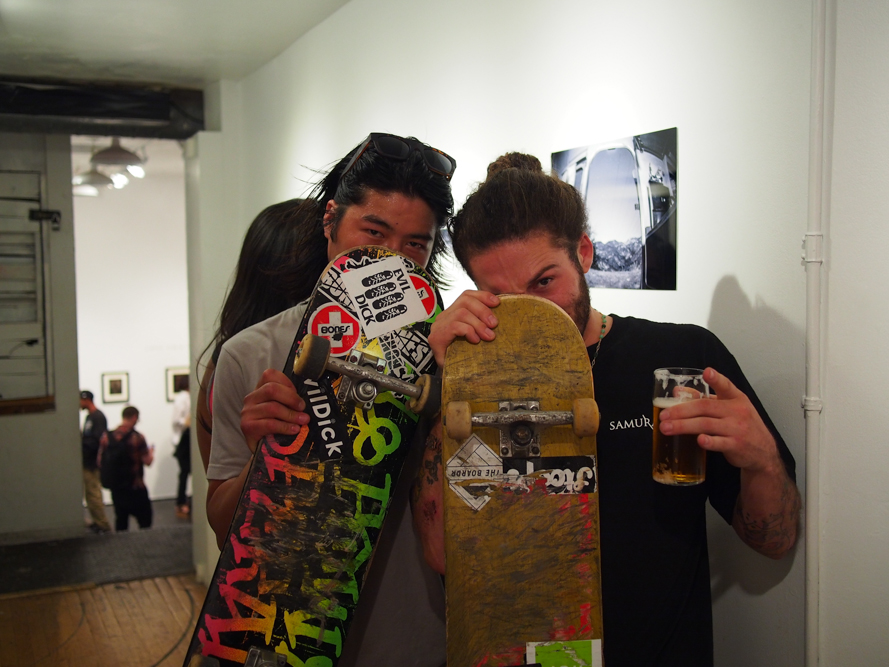
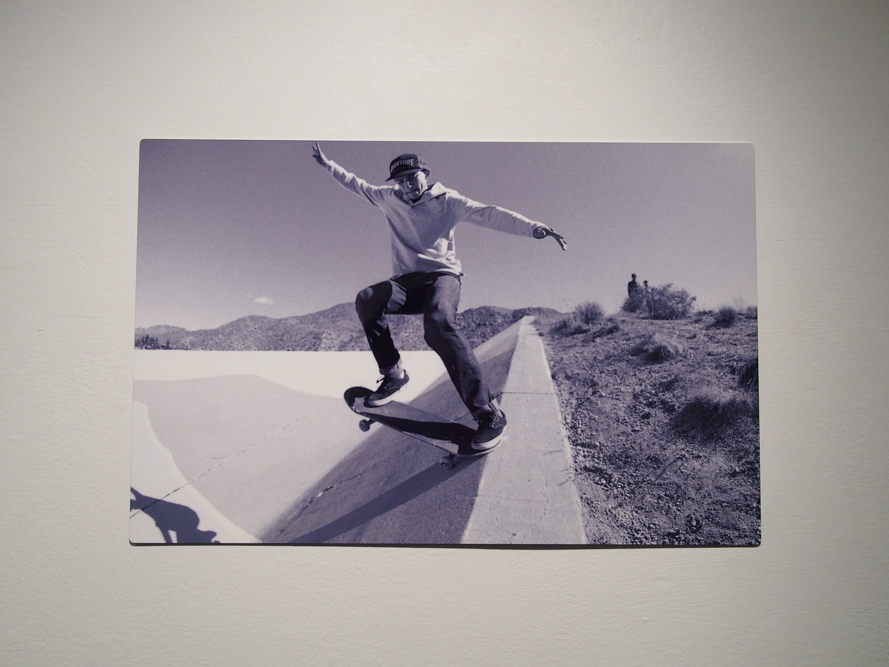
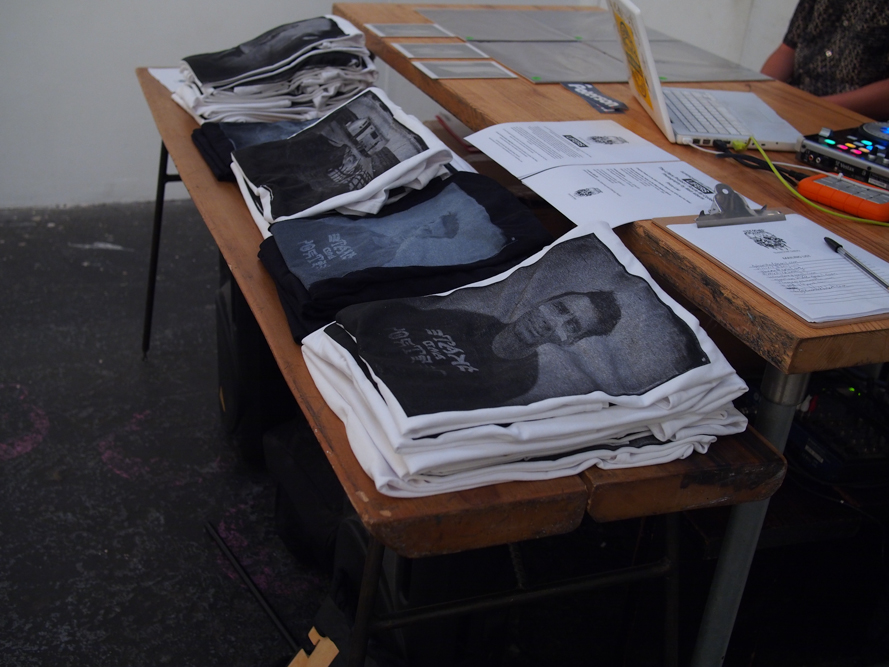
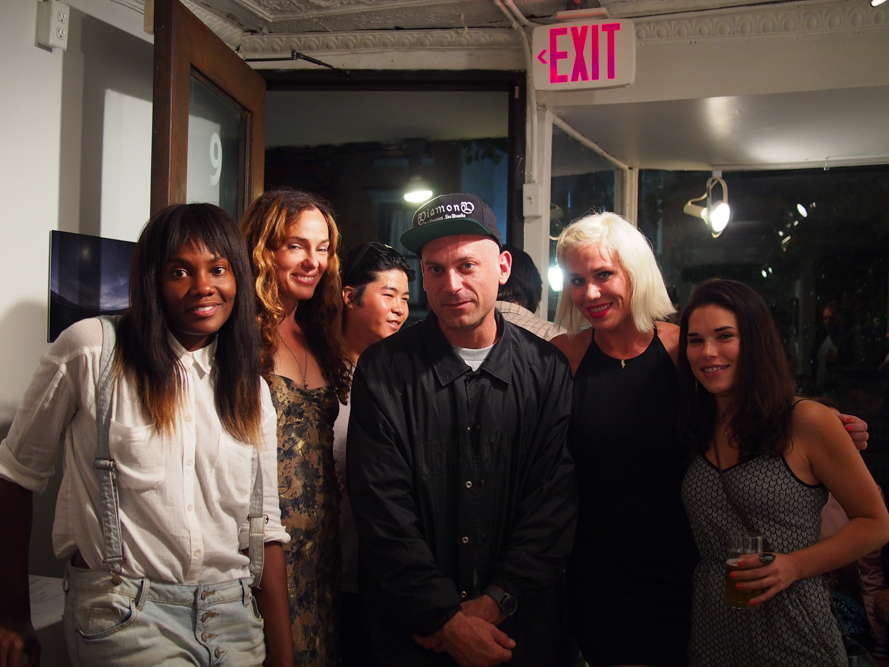
::

